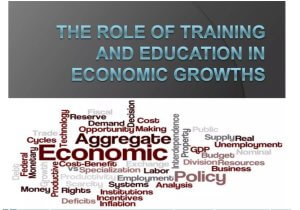By Louis-Marie Kakdeu
Let’s discuss the basics. Let’s talk about national education. The education of our children certainly but, of the future of our country in our continent. Let’s discuss our development, economic development as far as I’m concerned. I chose within the framework of this reflection to place national education at the heart of the economic development of the country. I have made a diagnosis of the situation followed with some relevant recommendations.
First the diagnosis:
- The objective of national education defined in the 1998 law on the orientation of national education in Cameroon is to train a citizen rooted in his culture and open to the world. in doing so, the ambition of the Cameroonian government was to provide the citizen with a great general culture and not with the practical know-how necessary for development. Here are the statistics: According to data from the Education Information and Management System (SIGE), of the 7.2 million pupils and students enrolled in public and private establishments in Cameroon in 2020, only 40,000 were in professional training.
- The outlet of national education since the colonial period is the civil service. Unfortunately, the number of places available per year has not evolved considerably since the colonial era to allow the State to absorb the 7 million people currently in the circuit.
- When we look at the share of formal technical education in secondary education, we find that it is limited to 23.5% of the school population (UNESCO, 2014), a situation that has not greatly increased or evolved since the end of the federal period in 1972 where technical educationaccounted for 22.6% of all secondary school students (Tsala Tsala, 2004). When we look at the decade 1990-2000, we realize that the gross enrollment rate (GER) in technical and vocational education and training (TVET) had only changed by 0.9 points from 5.0% to 5.9% (Mineduc (2002), which means that almost 94% of candidatesdid not have access to TVET.
- What about higher education? TVET remains concentrated at the secondary level where the dropout rate throughout the cycle is unfortunately 65%. Higher education is done under the regime of “grandesécoles” which are not free of charge and which in 2020 only offered 5,570 engineering places per year out of a total of 395,058 students (Minesup, 2020).
With such a diagnosis, we can easily understand the situation of chronic unemployment in our country as well as that of school dropout. So we say in Cameroon that school is useless.

What solution?
- Solution of the Cameroonian government: Within the framework of the Priorities of the sectoral policy of education and training 2013-2020, the government planned to make technical education and vocational training an important lever for improving the competitiveness of economy and wealth creation. This ambition was not pursued and it was not materialized anywhere. The situation is therefore catastrophic: In Cameroon in 2020, only one student in 20 was in technical education and only one graduate in 30 found a decent job after training. This has increased the propensity to migrate abroad, which is over 90% among young people. We all agree that such a training system is untenable.
- If we want to train citizens who thrive in their environment and boost our economic emergence, then we absolutely have to change the objective of national education. We must no longer train citizens with a “great general culture” without know-how and interpersonal skills; we must train CITIZENS CAPABLE OF TRANSFORMING THEIR ENVIRONMENT.We can no longer, for example, train citizens in a forest zone who are incapable of transforming the forest but capable of reciting Molière under the trees. We can no longer produce logs or even oil that we export in their raw state and then import what we need for our local consumption. We can no longer train citizens incapable of exploiting their resources from the ground and the subsoil. Clearly, general education can no longer include nearly 80% of the workforce. We must reverse the trend to boost the development of our country.
- We will not succeed in fighting corruption when the most educated citizens have the lowest incomes in society. ENAM is presented as a prestigious school and yet its graduates earn miserable salaries. Entrepreneurs (non-graduates) earn a better living than these civil servants and other employees. These can only be corrupted.
- We must democratize entrepreneurship. We will not have a free and competitive society when private enterprise is presented as part of a communal identity. The school must create entrepreneurs from basic education.
- We will not have a prosperous society when social success (outside of formal schooling) is seen as witchcraft or Famla. Successful young entrepreneurs are socially marginalized. They are accused of being witches. We do not understand how a non-graduate can better create wealth than a graduate. The educational system does not give citizens a “taste for wealth”. Financial education must be part of the content of national education to unleash wealth creation on a large scale.
I will not be exhaustive in this rapid reflection in reaction to a video overwhelming non-graduates “having succeeded” socially. I wanted to say that it is not enough to enter a network (which we call Famla) or to have financial capital to create wealth. You still need to have financial education. Unfortunately, this financial education is not found in schools these days, and that’s a shame!
I believe it is time to think about it and it is time to change.
Louis-Marie Kakdeu, PhD & MPA
University of Maroua
SDF Shadow Cabinet Member incharge of Finance, Economy and Trade